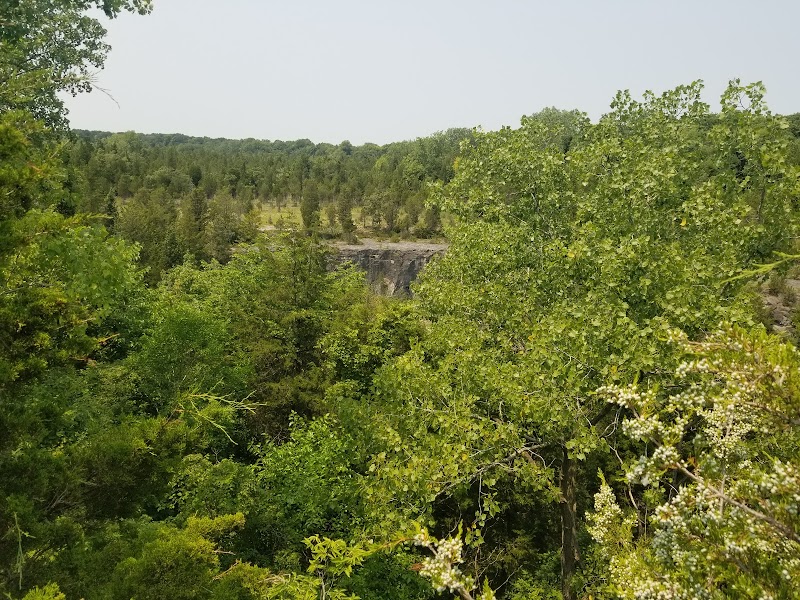
Metroparks Summer Paddle Series: Navigating Richmond’s Wild Waterways
The Metroparks Summer Paddle Series in Richmond, Michigan, offers an accessible yet invigorating way to explore the Huron River and surrounding waterways. Perfect for paddlers of all levels, this series blends natural beauty with practical adventure, guiding you through calm waters and shaded banks that come alive in summer.
Choose Early Morning Launches
Starting your paddle early helps you avoid heat and afternoon winds, offering calmer waters and better wildlife sightings.
Wear Quick-Drying Footwear
Expect occasional water splashes and wet terrains at launch points; lightweight, water-friendly shoes keep you comfortable throughout.
Carry a Dry Bag
Keep essentials like phones, snacks, and first-aid kits dry and accessible in a sealed dry bag to protect against unexpected dips in the water.
Respect Wildlife and Waterways
Maintain a safe distance from animals, avoid abrupt noise, and follow park rules to preserve the area's natural balance.
Metroparks Summer Paddle Series: Navigating Richmond’s Wild Waterways
Summer in Richmond, Michigan, transforms the local Metroparks into a playground for paddlers of every skill level. The Metroparks Summer Paddle Series invites adventure seekers to slide into kayaks and canoes, letting the currents guide them through serene rivers and shimmering lakes. This isn’t just a casual float; it’s a chance to engage with waterways that are fiercely themselves — the Huron River pushes confidently forward, daring you to keep pace, while quiet coves invite steady exploration and unexpected glimpses of wildlife.
Each route in the series averages between 3 to 6 miles, offering a range of challenges without requiring expert skills. Expect water levels to influence the pace more than elevation; the slow, natural gradients allow for long glides interrupted by occasional ripples tempting your balance. Shorelines framed by dense Michigan hardwoods offer shade and welcome spots to pause—those trees aren’t just scenery, but quiet sentinels watching your passage.
Timing your paddle is key. Early mornings offer glassy waters before the summer sun warms the air, while late afternoons bring shifting light that dances on waves. Plan for about 2 to 3 hours per paddle, factoring in breaks and photo opportunities. Footwear that dries quickly and stabilizing life vests are essentials—water has a steady invitation to splash and surprise.
To prepare, carry a sealed dry bag with hydration and snacks, sunscreen, and a small first-aid kit. Parking is generally straightforward at Metropark points, with launch sites clearly marked. Paddlers unfamiliar with the area will appreciate the guided options within the series, where organizers provide safety briefings and insider tips about currents and wildlife patterns.
Wildlife doesn’t just observe quietly; herons stalk the shallows, turtles sun themselves on logs, and otters slip through reeds like shadows. If you keep your movements deliberate, the waterways reveal stories of natural life that’s steady and alive, far from tame but quietly cooperative. Nearby towns offer a practical base with amenities, making this adventure as accessible as it is invigorating.
In sum, the Metroparks Summer Paddle Series is an invitation—not to conquer or escape—but to move with a force that is ancient, vibrant, and uncompromising. Whether you’re looking to sharpen your paddling skills or simply want a refreshing summer outing with nature as your companion, this series makes the Huron River and its neighbors approachable yet thrilling waterways to explore.
Nearby Trips
All Adventures
Boat Charters
Water Activities
Adventures near Richmond, Michigan
Discover the unique and memorable adventures that make Richmond, Michigan special.
Frequently Asked Questions
Are paddling rentals available at the Metroparks during the Summer Paddle Series?
Yes, several Metropark locations including Stony Creek and Lake St. Clair offer kayak and canoe rentals during the series, making it easy for visitors without their own gear to participate.
What wildlife might I see while paddling in Richmond’s Metroparks?
Herons, turtles, river otters, and a variety of songbirds regularly share the waterways. Early mornings are especially good for spotting beavers and occasionally bald eagles overhead.
Are the paddling routes suitable for beginners?
Most routes are rated moderate and are designed to accommodate paddlers with basic skills. Guided sections and safety briefings are often provided during the series to support newcomers.
Is there a best time of day to paddle for photography?
Early mornings and late afternoons provide the best lighting for photos. Calm water surfaces during these times enhance reflections, and soft sunlight highlights the local landscape.
Are pets allowed on the paddling routes or in the parks?
Most Metroparks welcome pets on-leash; however, check specific park rules as some waterways and launch sites may have restrictions for safety and wildlife protection.
What should I know about water conditions and current during the paddle series?
Currents are generally mild but can vary with rainfall and season. It’s important to stay with the group if in guided paddles and keep an eye on weather updates for any sudden changes.
Recommended Gear
Life Vest
Required for safety; ensures buoyancy and confidence on water regardless of skill level.
Quick-Dry Footwear
Protects feet during launches and any shoreline exploration, keeps feet comfortable when wet.
Sealed Dry Bag
Protects valuables and essentials from water damage during paddling.
Water Bottle
Staying hydrated is critical, especially under the summer sun while exerting energy on the water.
Local Insights
Hidden Gems
- "Quiet coves along the Huron River where herons often nest"
- "Small islands accessible by paddle only, offering peaceful picnic spots"
Wildlife
- "River otters that briefly pop up near woody shorelines"
- "Songbird flocks migrating during early summer mornings"
- "Turtles basking on driftwood logs"
History
"Richmond Metroparks include sections of historic river routes once used by Native American tribes and early settlers for transport and trade, reflected subtly by old mills and bridges still standing along some paths."
